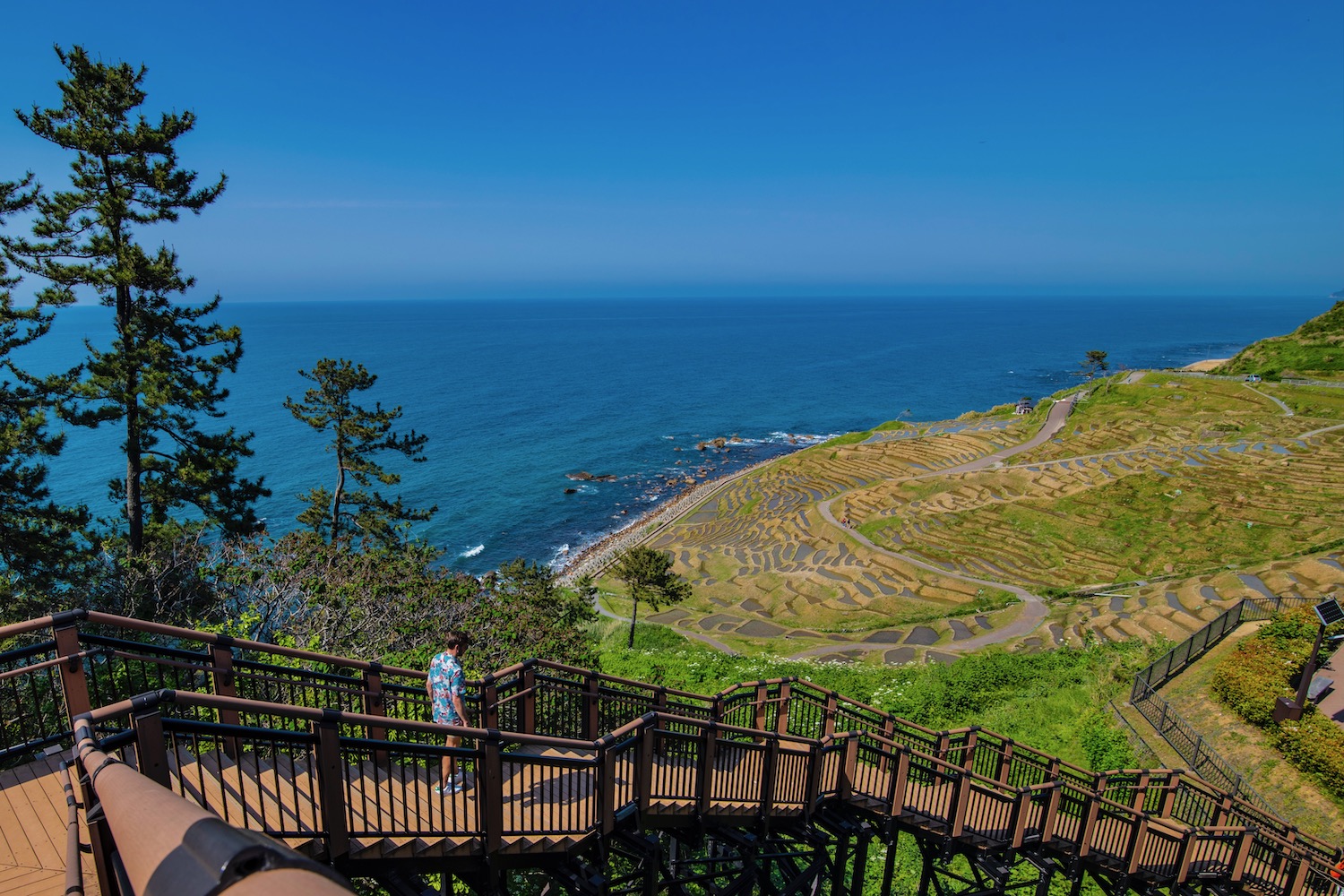I felt anxious as I drove onto the Noto Peninsula, but not necessarily in a bad way. There was something about the pine trees—I knew they bent the way they did because they’d been blown one way or another for decades, and maybe for centuries. And yet somewhere within me I felt I might miss them if I didn’t get a move on.
There was that, and the knowledge that later in the afternoon, I’d be entering an actual disaster zone: The town of Suzu, where a strong earthquake had struck days earlier. In spite of this, and the taunting of the matsu-no-ki, I tried to live in the moment as much as I could.
While I hope recollections of my Noto Peninsula itinerary will help you plan yours, I also help they serve as a record of the strange and beautiful day I spent there. It was deeply affecting—I hope it won’t be my last.
How to Reach the Noto Peninsula
Driving northward and then eastward from Kanazawa Station, it’s hard to tell where the city ends and where the peninsula begins. Actually, that’s a lie. When stop lights and slow traffic become open expressways and speeding cars, you’re on the Noto Peninsula. As is the case then long, sand beaches and the aforementioned pines come to define the landscape.
The issue, as is often the case, is really that Noto is bigger than it looks. While you can technically be there in less than an hour, driving from Kanazawa, some destinations are half a day away. I’ll talk more about this in a few paragraphs, but the reality is that a day on the Noto Peninsula probably isn’t enough, in spite of the fact that this is all that most people (myself included) tend to allocate.
My Favorite Stops on the Noto Peninsula
Kita Residence

When I arrived at Kita Residence, having just driven along the famous Chirihama “Car” Beach, the woman who opened the wooden gate seemed honestly startled—she didn’t expect a guest right at opening time, and certainly not a foreigner. However, while the slow pace of the tour definitely heightened the anxiety I was feeling, the insights I got from the guide (who seemed to be a descendent of the ninja clan that owns the home) were priceless.
Ganmon and Hatago Iwa
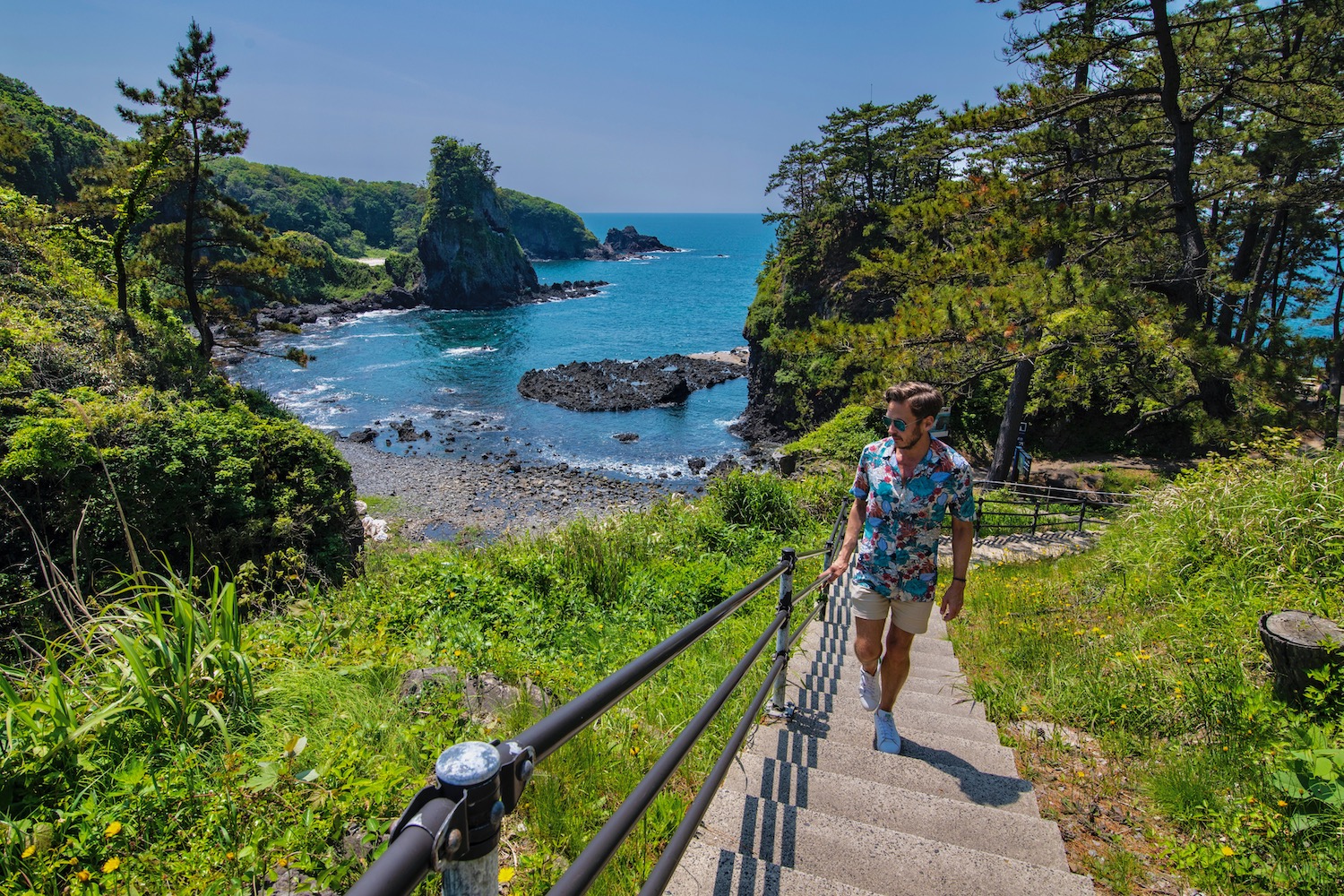
A Noto Peninsula day trip, to be sure, is arguably more about scenery than culture. And if there’s one place in Noto that looks like it’s straight out of a traditional painting, it’s Ganmon (and maybe, secondarily, the “wedded” Hagoto Iwa rocks. Interestingly, my most vivid memory of Ganmon is not its beauty, but of the hawks flying overhead—and dipping very low—as I traipsed along its rock beaches in search of the perfect light.
Shiroyone Senmaida Rice Terraces
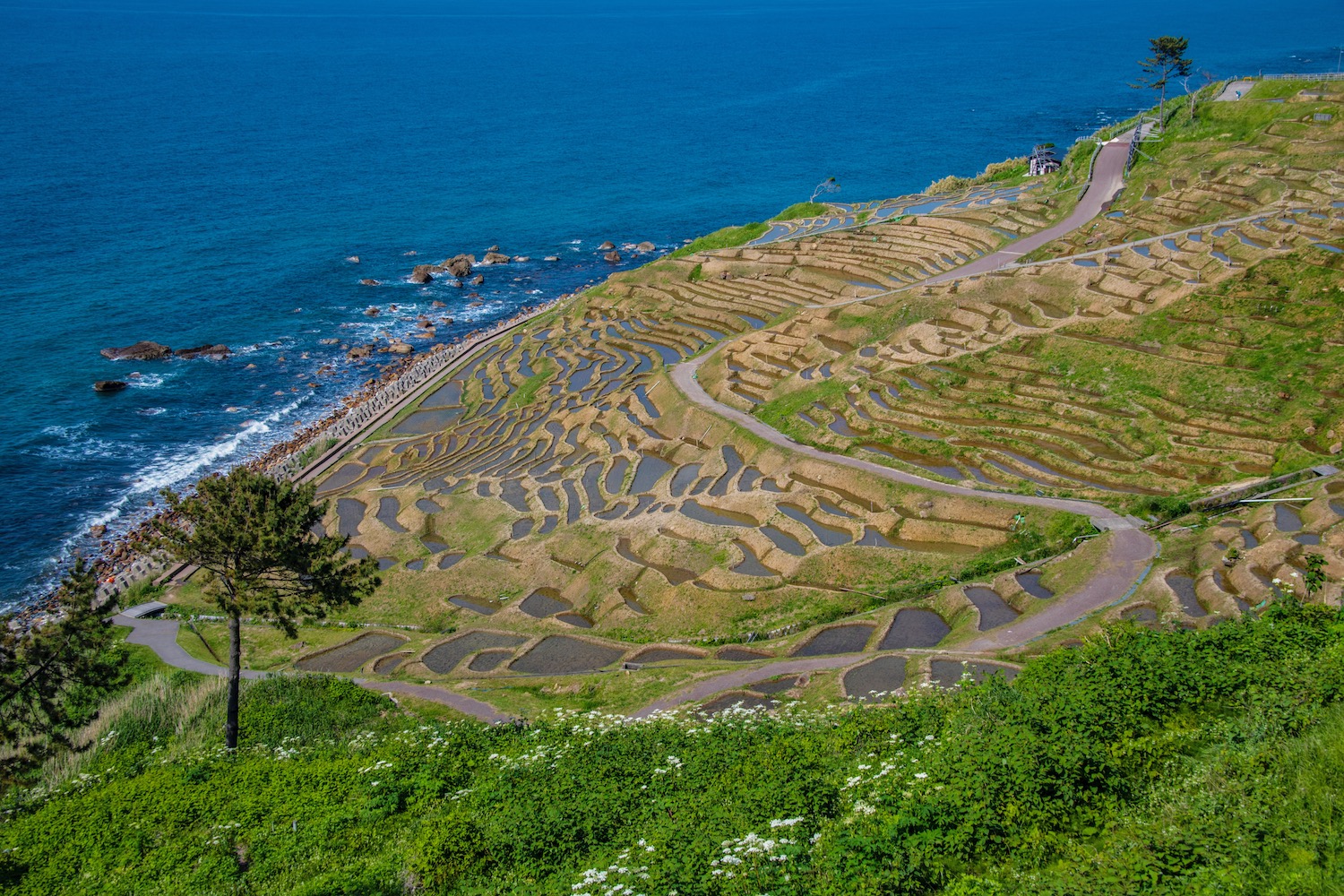
Could they have been activated by the scent of death and destruction coming from where the earthquake hit? Maybe, but that was certainly far from my mind by the time I reached the Shiroyone Senmaida Rice Terraces—the scenery here is nothing, if not joyful. Of the dozens of happy people I saw exploring them when I did, the ones I remember most clearly were a pair of old ladies, frolicking through the fields as if they were still schoolgirls!
Mitsukejima
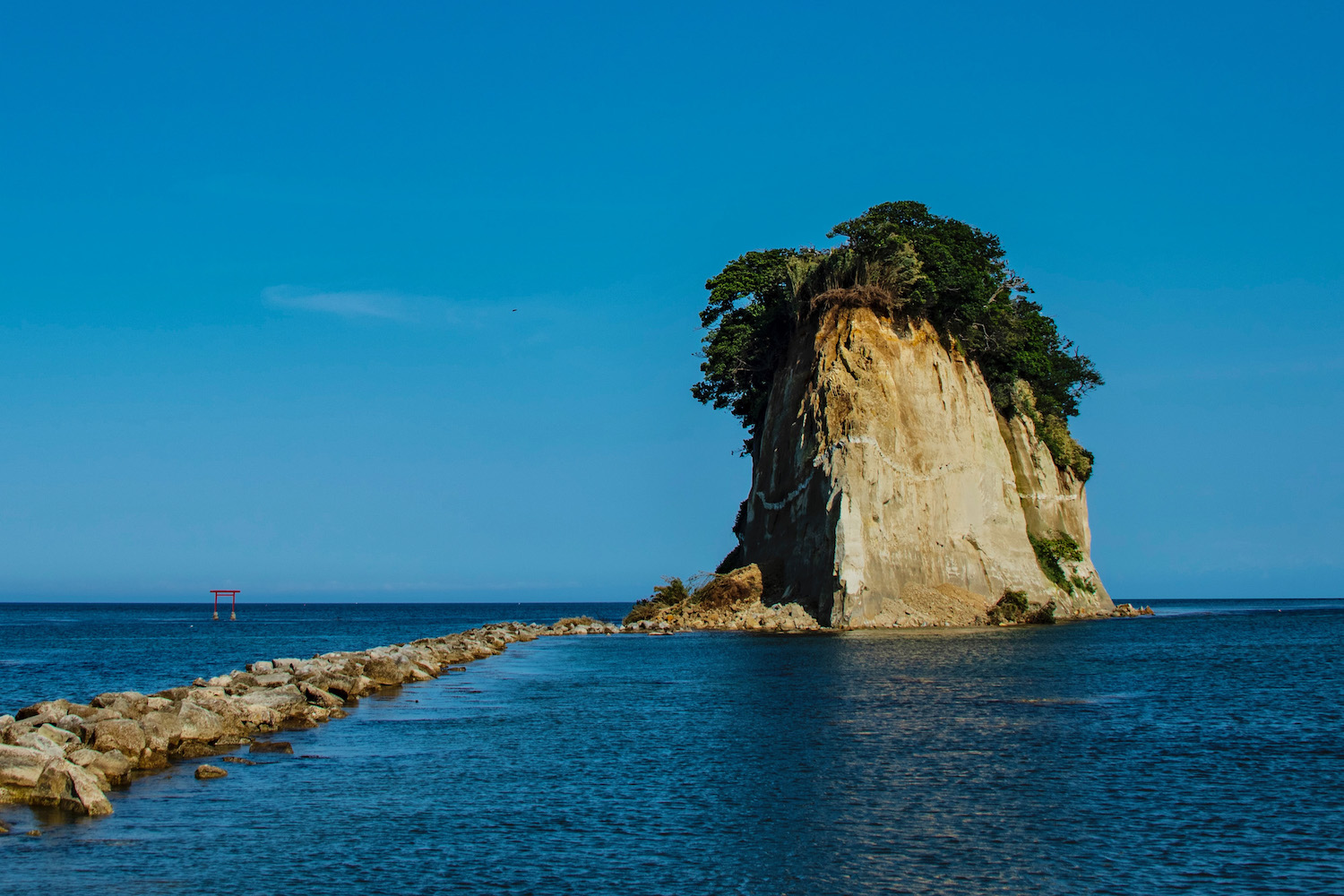
“Road closed due to disaster,” read a sign (in Japanese and, surprisingly, in English) as I headed eastward from the rice terraces. The good news? The closure (which was actually a detour) didn’t derail my Noto Peninsula road trip. The bad news? Although I was able to reach Mitsukejima, an island connected to the mainland via a pearl-like strand of jagged rocks jutting out of the ocean, I couldn’t walk onto it due to perceived danger of aftershocks.
The middle of nowhere

I’m not a big anime fan, but the vast unincorporated, unsung rural reaches of the Noto Peninsula seem like they’re culled from one. This was certainly the case when I visited, in mid-May, and the wisteria vines snaking around the plentiful evergreens everywhere were so ubiquitous that entire hillsides looked purple instead of green. The Noto Peninsula is nothing if not authentic, but there’s also a surreal element in its realness.
How Many Days Do You Need on the Noto Peninsula?
Looking back on my Noto Peninsula day trip, I really wish I’d had two days, with a night spent (probably) in Wajima. Even if you drive without stopping, Wajima is several hours from Kanazawa on one end and Toyama on the other; the scenery on the western part of the peninsula is distinct from what you find on the east. Bifurcating these not only gives you more time to enjoy both, but just seems logical, looking back.
This is if you rent a car. If you plan to get by using trains and buses—which you can do, although it’s tedious—you’ll need a lot more time. Three days is really ideal in this case! However, if you’re not opposed to the idea of renting a car in Japan, this is really the better option. There are just too many places on the Noto Peninsula that are basically inaccessible without your own set of wheels.

Other FAQ About Visiting the Noto Peninsula
Is the Noto Peninsula worth visiting?
The Noto Peninsula is completely worth visiting. Even if you’re a veteran Japan traveler and are not impressed easily, the combination of painting-looking scenery and a very unique, separate culture will allure you. Plus, Noto is easily accessible from both Kanazawa and Toyama.
Where is the Noto Peninsula?
The Noto Peninsula is located in Ishikawa prefecture, on the Sea of Japan in the heart of the Hokuriku region. It’s more or less equidistant from the cities of Kanazawa and Toyama, although the majority of people who visit do so from the former, rather than the latter.
What prefecture is the Noto Peninsula?
The Noto Peninsula is technically part of Ishikawa prefecture, which you’ll most likely know as being home to the city of Kanazawa. However, the eastern parts of Noto are actually closer to and more easily accessible from Toyama than they are from Kanazawa.
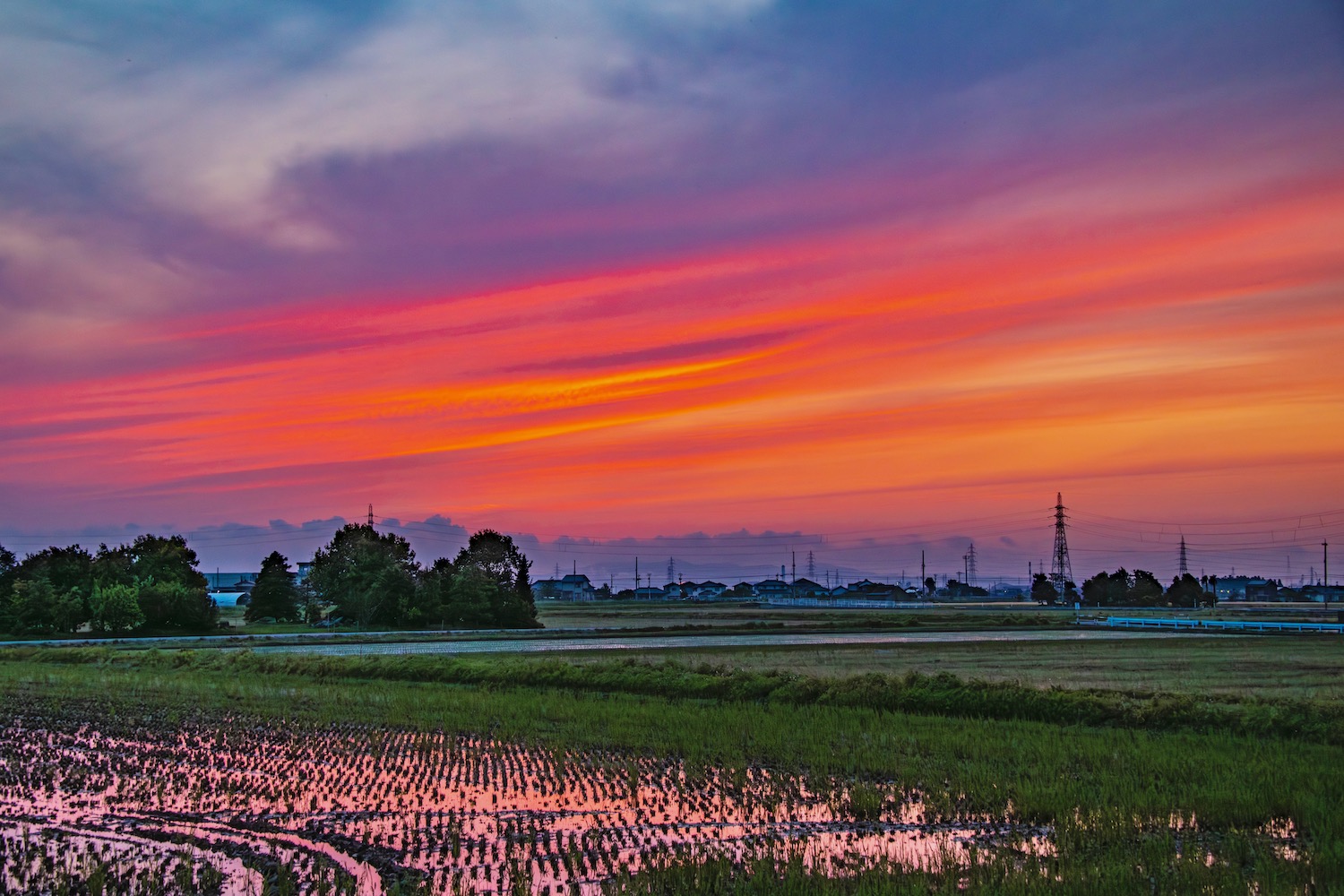
The Bottom Line
Although I’d spent literally years of my life in Japan by the time I planned my Noto Peninsula itinerary, I can honestly say it’s one of the most memorable—haunting—experiences I’ve ever had in the country. My only regret is that I didn’t have more time—I hope I can rectify this in the future. As is the case with all the best road trips, Noto-hantō is so much more about the journey than the destination, even if certain spots are worth the trek all on their own, from striking rice terraces to history-rich ninja homes. Perfectly integrate that Noto Peninsula into any Japan itinerary when you hire me to plan it.



